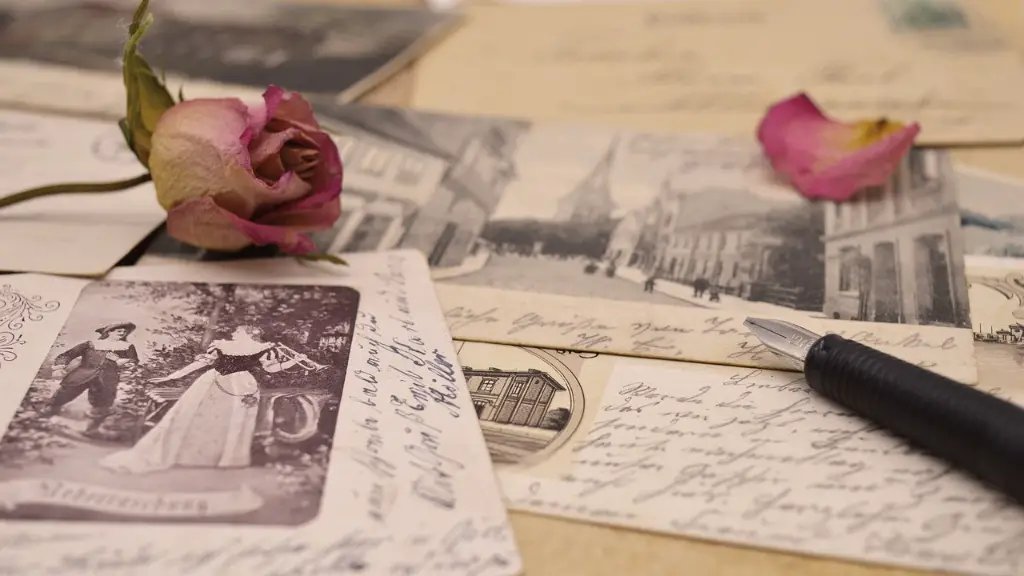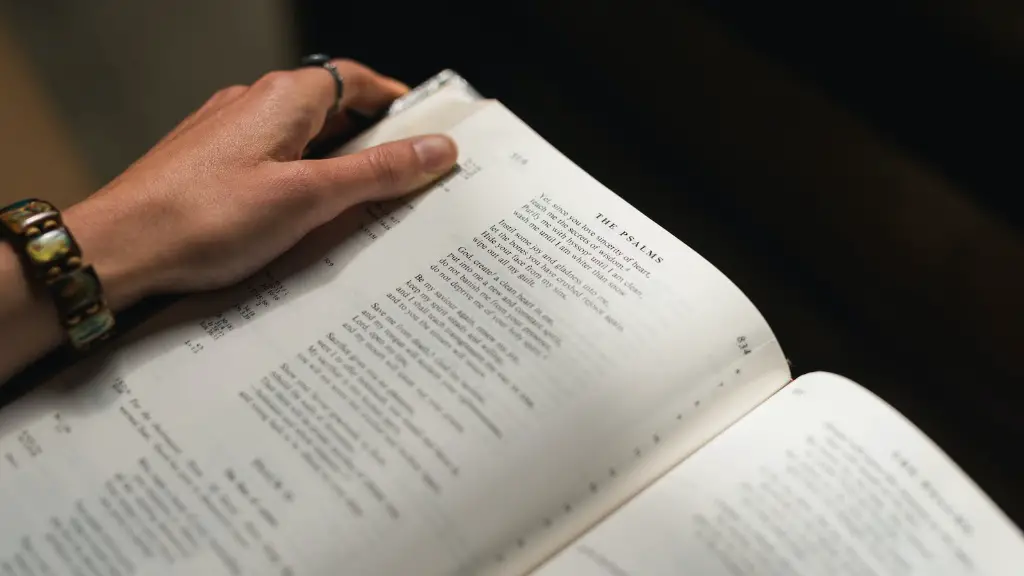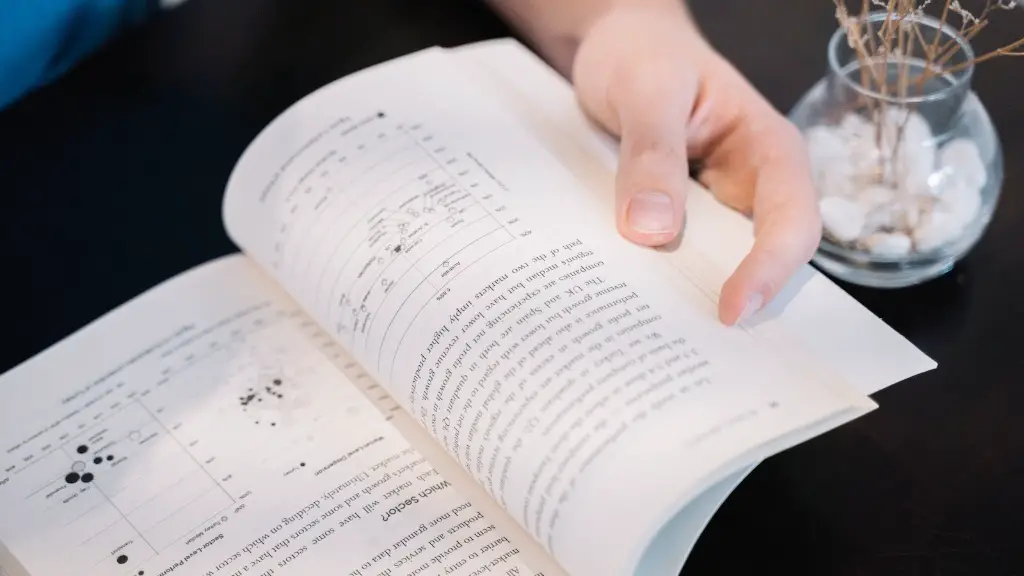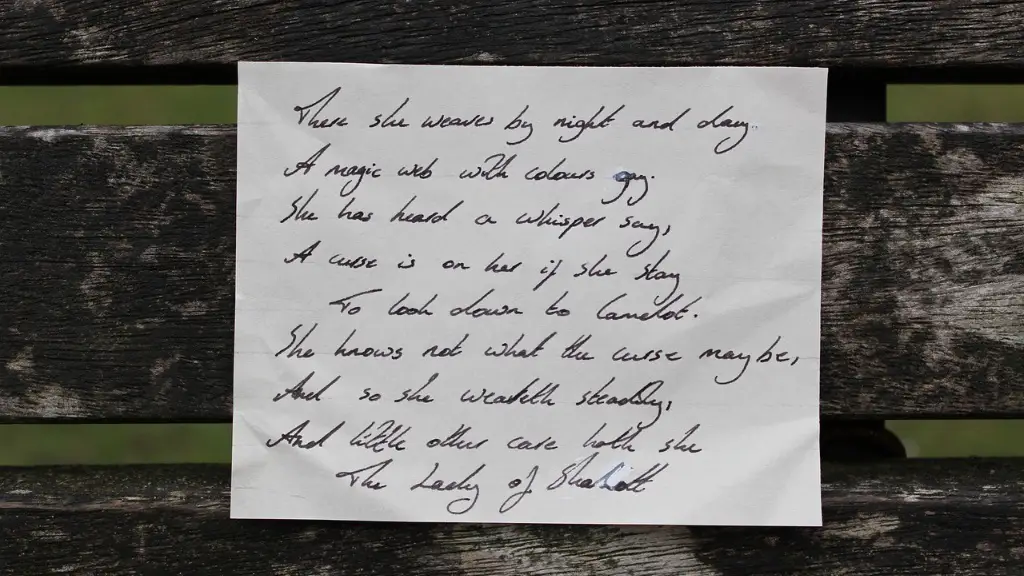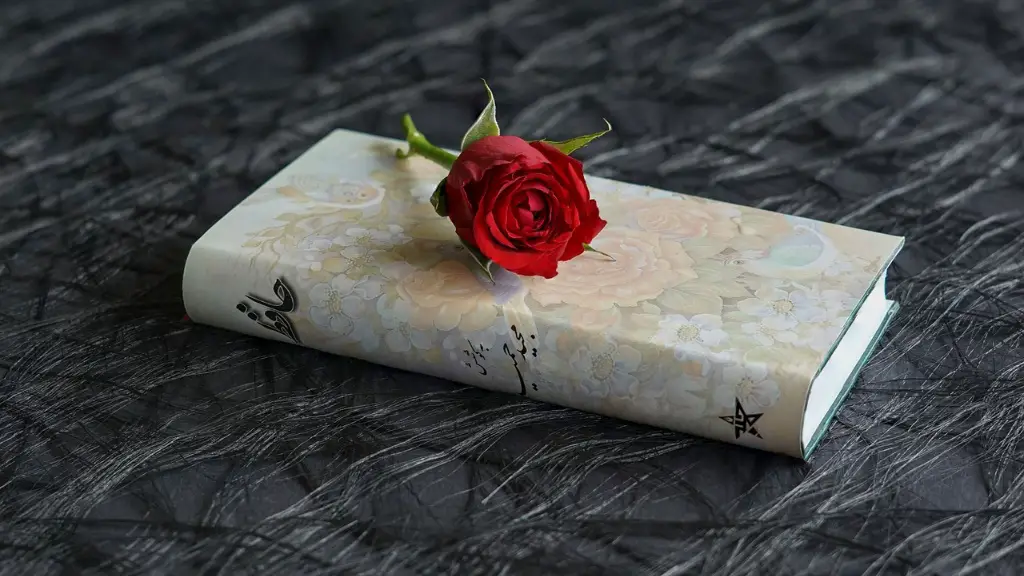Repetition is a powerful literary device which is often employed by poets to add depth and dynamism to their work. By repeating a sound, phrase, or words, a poet can create a sense of rhythm and emphasize certain themes or ideas. Repetition can also be used to create imagery, intensify emotion, and create patterns and echoes throughout the work.
Throughout history, poets have used repetition to great effect to convey complex ideas and emotions more effectively. Repetition is often used to create a sense of rhythm and musicality in a poem. It can also draw the reader’s attention to a particular line or phrase, adding emphasis and meaning. For example, T.S. Eliot’s iconic “The Waste Land” contains repeated phrases such as “April is the cruelest month”, which serves to convey the sense of despair and longing that permeates the work.
Repetition can also be used to create or reinforce the mood or atmosphere of a poem. By focusing on a particular sound or phrase, the poet can evoke a certain emotion in the reader and create a feeling of longing or excitement. William Carlos Williams’ famous poem “This Is Just to Say” is an excellent example of how repetition can be used to create mood. In the poem, Williams repeats the phrase “I have eaten” to create a sense of guilt and regret.
In addition, repetition can be used to create patterns and echoes throughout a poem. By repeating a particular sound or phrase, the poet can create a sense of cohesion and order. Also, by repeating certain words or phrases, the poet can add a layer of complexity to his or her work. For example, in his famous poem “The Road Not Taken”, Robert Frost uses repetition to create a sense of structure and order as well as to reinforce the idea of the difficult choices that life presents.
Furthermore, repetition can be used to create vivid imagery or symbolism in a poem. By repeating or elongating a particular sound or phrase, the poet can evoke a certain image or feeling in the reader. This can be effective at conveying complex ideas and emotions, such as sadness or joy. For example, the poet Langston Hughes uses repetition in his poem “Harlem (A Dream Deferred)” to emphasize the idea of the passing of time and the inevitable passing of life.
Overall, repetition is an essential tool in a poet’s toolkit. By repeating a particular sound or phrase, a poet can evoke certain emotions and create vivid imagery. It can also be used to create patterns and structure as well as to emphasize certain ideas or themes. Repetition is a powerful literary device that can be used to great effect in poetry.
The Effect of Repetition on the Reader
The effect of repetition on a reader can be profound. It can evoke emotion, create imagery, and add emphasis to a work. However, too much repetition can be distracting and ineffective. It is important for poets to strike the right balance when using repetition in their work.
For example, if a poem contains too much repetition, a reader may become bored or distracted. This can break the flow of the poem and make it difficult to comprehend. Too little repetition, on the other hand, can make a poem seem disjointed and lacking in structure. Poets must strive to find the right balance between the two in order to create a work that is effective and engaging.
Repetition can also be used to create an emotional connection between the poet and the reader. By repeating a particular phrase or sound, the poet can evoke a certain feeling or emotion in the reader. This can be used to great effect to convey complex emotions and ideas. Examples of this can be seen in Wordsworth’s “The Prelude” in which repetition is used to create an atmosphere of longing, wonder, and awe.
Repetition can also be used to emphasize key themes or ideas in a poem. By repeating a particular sound or phrase, a poet can draw the reader’s attention to a particular line or thought. This can be used to great effect to emphasize important ideas or to create imagery. For example, the poet Walt Whitman employs repetition in his famous poem “I Sing the Body Electric” to create a sense of awe and wonder.
Overall, repetition can have a profound effect on a reader. By carefully choosing which words and sounds to repeat, a poet can create vivid imagery, evoke emotion, and emphasize certain themes or ideas. It is important for poets to be mindful of the effect that repetition can have on the reader.
The Use of Repetition in the Writing Process
The use of repetition in the process of writing a poem is a valuable tool for the poet. By repeating a particular sound or phrase, a poet can create rhythms and patterns in the poem that can add a layer of dynamism and complexity. Repetition can also be used to emphasize certain ideas or imagery.
One effective way to use repetition in the writing process is to create a pattern or refrain within the poem. This can be done by repeating a particular word or sound throughout the poem. This can be used to create a consistent rhythm that adds focus and structure to the poem. It can also be used to emphasize certain words or ideas in the poem.
Also, by repeating certain words or phrases, a poet can create vivid imagery in the poem. This can be used to evoke a certain feeling or emotion in the reader. Additionally, by repeating certain sounds, the poet can create a cohesive landscape that connects the various elements of the poem. This can be used to add depth and complexity to the poem.
Furthermore, the use of repetition can be used to create a sense of foreshadowing or build tension in a poem. By repeating a particular sound or phrase, a poet can evoke a sense of anticipation or dread. This can be an effective way to add drama and intensity to a poem.
Overall, the use of repetition in the writing process is an invaluable tool for a poet. By repeating a particular sound or phrase, the poet can create a cohesive structure and vivid imagery in the poem. It can also be used to evoke emotion and create drama and tension. It is important for poets to be mindful of the effect of repetition in the writing process.
The Role of Repetition in Poetry
The role of repetition in poetry is essential. It is used to create structure and order in a poem, to evoke emotion, and to emphasize certain themes. Repetition can be used to great effect to create focus and clarity in a poem. For example, by repeating a particular sound or phrase, the poet can create a steady rhythm that adds structure and cohesion to the poem.
Also, repetition can be used to emphasize certain ideas or motifs in a poem. By repeating a particular sound or phrase, the poet can draw the reader’s attention to a particular line or thought. This can be used to great effect to emphasize a particular theme or idea in the poem.
In addition, repetition can evoke emotion in the reader. By repeating a particular phrase or sound, the poet can create a certain atmosphere in the reader. This can be used to great effect to convey complex emotions such as sadness or joy. For example, in his poem “Ozymandias”, Percy Shelley uses repetition to create a mood of despair and tragedy.
Furthermore, repetition can also be used to create vivid imagery and symbolism in a poem. By repeating certain words or images, the poet can evoke a certain feeling in the reader. For example, in his poem “Do Not Go Gentle into That Good Night”, Dylan Thomas uses repetition to create a powerful and moving image of death and mortality.
Overall, repetition is an essential tool for a poet. By carefully choosing which words and sounds to repeat, a poet can create structure, evoke emotion, and create vivid imagery. It is important for poets to consider the role of repetition in their work.
The Power of Repetition in Poetry
The power of repetition in poetry can be immense. Repetition can create a sense of order and structure, evoke emotion, and emphasize certain ideas or themes. By carefully crafting a poem with repeated sounds and phrases, a poet can create a powerful and moving work of art.
For example, William Wordsworth employs repetition in his poem “The Prelude” to great effect. In the poem, Wordsworth repeats certain words and sounds, creating a sense of longing and awe in the reader. By repeating certain lines, Wordsworth draws the reader in and creates an emotional connection between the reader and the poem.
Moreover, repetition can be used to emphasize certain themes or ideas in a poem. By repeating a particular phrase or sound, the poet can draw the reader’s attention to a particular line or thought. This can be used to great effect to emphasize a particular idea or theme in the poem. For example, Robert Frost uses repetition in his poem “The Road Not Taken” to great effect. By repeating the phrase “the road not taken”, Frost emphasizes the idea of difficult choices that life presents.
Furthermore, repetition can be used to create vivid imagery or symbolism in a poem. By repeating certain words or phrases, the poet can evoke a certain image or feeling in the reader. This can be effective at conveying complex ideas and emotions. For example, in his poem “The Gettysburg Address”, Abraham Lincoln uses repetition to create a sense of power and triumph in the reader.
Overall, repetition is an essential tool for a poet. By carefully crafting a poem with repeated sounds and phrases, a poet can create a powerful and moving work of art. It is important for poets to consider the power of repetition in their work.
Conclusion
As we can see, repetition is an invaluable tool for a poet. It can be used to create structure, evoke emotion, and create vivid imagery and symbolism in a poem. By repeating a particular word or phrase, a poet can draw the reader’s attention to a particular line or thought. Also, repetition can be used to emphasize certain ideas or themes. It is important for poets to consider the role of repetition in their work.

